Current Affairs
TOC Special Feature: Is Singapore really slum-free?
While helping to build S’pore’s skyscrapers, foreign workers are forced to live in atrocious conditions. Stephanie Chok.
Location, location, location. Is that the only problem we have when it comes to housing for foreign workers? In Part One of this Special Feature, Stephanie Chok argues that the real ‘housing problem’ is the substandard living conditions thousands of men and women are made to endure daily in this prosperous, globally admired city.
Watch the video before you read the following article.
Stephanie Chok / Pictures by Damien Chng
Liu, 23, from Hebei, China, stayed in the basement of this condominium worksite at Cairnhill Rise for three to four months (see video above). He was sent to another worksite by his employer, Tiong Seng Contractors, around April 2009. (Why was he moved out? Liu was sent from worksite to worksite throughout his time working here, after this he was sent back to a Tuas worksite for a short period, and later to work at the Resorts World Sentosa site.)
In mid-September, his former co-workers were still living in that decrepit basement, surrounded by pools of “smelly water” [臭水]. Meal times, they gather to eat in makeshift areas, balancing styrofoam boxes on upturned buckets or sitting by their bug-infested beds. Drinking water is drawn from sinks which are lined with scum, sinks close to clogged toilets that remain un-repaired. One can only imagine the stench in this humid, damp basement where up to 200 men eat, live and rest, seven days a week.
Before this, Liu previously lived in a dormitory in Toa Payoh and an on-site container [集装箱] somewhere in Tuas. “These places must be much better than the condo basement, right?” I asked Liu. “They were even worse!” he retorts. Worse? I’m trying to imagine ‘worse’ than a toilet swilling with faeces and sleeping on a damp wooden board crawling with insects.
 At the Toa Payoh dormitory,100 men were crammed into one big open hall. Bunk beds were lined side by side, with only a narrow path in between for people to walk, single-file. Personal belongings like suitcases were strewn on the bed (the only space available), or sometimes underneath them. “What if there is a fire? There will be casualties,” I said to Liu. He nods in agreement. It will be mayhem as hordes of people try to escape through tight, overloaded spaces. “We were not even told where the fire extinguisher is!”says Liu.
At the Toa Payoh dormitory,100 men were crammed into one big open hall. Bunk beds were lined side by side, with only a narrow path in between for people to walk, single-file. Personal belongings like suitcases were strewn on the bed (the only space available), or sometimes underneath them. “What if there is a fire? There will be casualties,” I said to Liu. He nods in agreement. It will be mayhem as hordes of people try to escape through tight, overloaded spaces. “We were not even told where the fire extinguisher is!”says Liu.
At Tuas, Liu lived in a container. There were 18 men squeezed into each container and cooking is not allowed. If you attempted to do so, you would be fined; if you had cooking utensils, they would be confiscated. How much is the fine? “I don’t know, I didn’t dare to risk it,” Liu smiles ruefully. Instead, $100-$120 is deducted from the workers’ salaries every month for meals that are delivered to the site – workers have no choice in the matter. This is a common practice. Workers complain that the meals delivered are inadequate, poor in quality and sometimes rancid as they are eaten only hours after delivery, causing food poisoning. (Liu has previously found worms in his food.) On-site, there were about 10 toilet stalls shared among 200-300 men from different companies, all living in containers.
The ‘housing problem’
 Housing for foreign workers in Singapore is recognized as ‘problematic’. Yet what is often articulated as ‘the problem’ falls into the following categories: shortage of housing, legal versus illegal housing and, of course, where such housing is located. (Basically, the further away from Singaporean residents the better, as demonstrated by the Serangoon Gardens saga). The ‘problem’, however, if you asked the workers forced to live in cramped, ill-ventilated and unsanitary housing, may yield quite a different answer.
Housing for foreign workers in Singapore is recognized as ‘problematic’. Yet what is often articulated as ‘the problem’ falls into the following categories: shortage of housing, legal versus illegal housing and, of course, where such housing is located. (Basically, the further away from Singaporean residents the better, as demonstrated by the Serangoon Gardens saga). The ‘problem’, however, if you asked the workers forced to live in cramped, ill-ventilated and unsanitary housing, may yield quite a different answer.
There are situations where bathing means scooping water from a giant communal tank – rain or shine, whether you’re well or running a fever, you are made to stand in the open with everyone else and douse yourself with cold water. Other novel shower routines include collecting water in a bucket so as to soap and rinse yourself while standing about in your underwear. After a 10 to 12 hour work shift, one can wait up to 11pm or midnight (if there is overtime work) just for the opportunity to bathe. This is what happens when you have up to a hundred men and only a few taps.
The buckets also serve another purpose – workers hand-wash their clothes in these buckets and put them up to dry wherever they can, stringing up makeshift clothes-lines or hanging damp clothing by their bed-frames. (To add to the indignity, workers’ salaries are deducted for such housing.)

Food storage is another issue. I once gave Guang, a construction worker living in a shophouse dormitory in Lavender, some Chinese New Year goodies. The entire horde was finished that same night! He later explained it was either him finishing it or the rats – there is no fridge nor pantry area to keep perishables and the dorm is rat-infested. “Why not complain to the authorities,” I asked. “They’ve already come before!” he says. According to Guang, conditions improved slightly just before the raid, but reverted to ‘normal’ soon after. “What to do?” he shrugged. No wonder he and his colleagues were dying to return home as soon as possible.
 A phrase I’ve heard several times when I asked foreign workers from China about their living conditions is “恶劣” – disgusting. And not just disgusting, mind you, but “非常 恶劣” – exceptionally so. Jiang, 38, a construction worker, stayed in a room with 100 others. Ventilation was poor so it was unbearably hot. (Ever walked into a dormitory without windows? It feels like you’ve just been shoved into an oven and someone slammed the door shut.) The bed bugs, says Jiang, were intolerable, “I couldn’t sleep the whole night”. Jokes Xu, 39, also a construction worker, “Bed bugs, cockroaches and mosquitoes are our ‘close companions’ here in Singapore, they whisper sweet nothings [悄悄话] to us all night.”
A phrase I’ve heard several times when I asked foreign workers from China about their living conditions is “恶劣” – disgusting. And not just disgusting, mind you, but “非常 恶劣” – exceptionally so. Jiang, 38, a construction worker, stayed in a room with 100 others. Ventilation was poor so it was unbearably hot. (Ever walked into a dormitory without windows? It feels like you’ve just been shoved into an oven and someone slammed the door shut.) The bed bugs, says Jiang, were intolerable, “I couldn’t sleep the whole night”. Jokes Xu, 39, also a construction worker, “Bed bugs, cockroaches and mosquitoes are our ‘close companions’ here in Singapore, they whisper sweet nothings [悄悄话] to us all night.”
The word ‘home’ connotes images of a warm and comfortable dwelling place, a haven in which we unwind, enjoy privacy, leisurely pursuits, and the company of loved ones. The fortunate among us experience this daily, but not enough do (and it’s not just foreign workers). Yet even at its most basic, a home is expected to be functional – a place to cook, eat, sleep, shower. In too many dormitories, even these needs are ill-considered.
There have been comments from some people that since these workers come from ‘Third World’ countries, they should be used to such poor living conditions. On the contrary, ‘it was never this bad back home’, is a sentiment I frequently hear from migrant workers themselves. Liu, for example, has experience as an internal migrant worker, having worked in Beijing doing construction work. While he has stayed on-site in buildings under-going construction, he insists that workers are never placed in the basement because it will be too damp and unsanitary.
There is often also disbelief – many foreign workers have expressed shock that such conditions exist in Singapore, a country they perceived, prior to arriving here, as ‘developed’ and wealthy. But soon comes the realization that such conditions exist here, for those on the margins. Liu is cognizant of the fact that while he and his fellow workers languor in filth at the bottom of this building, when completed, each apartment may be worth a few million dollars.
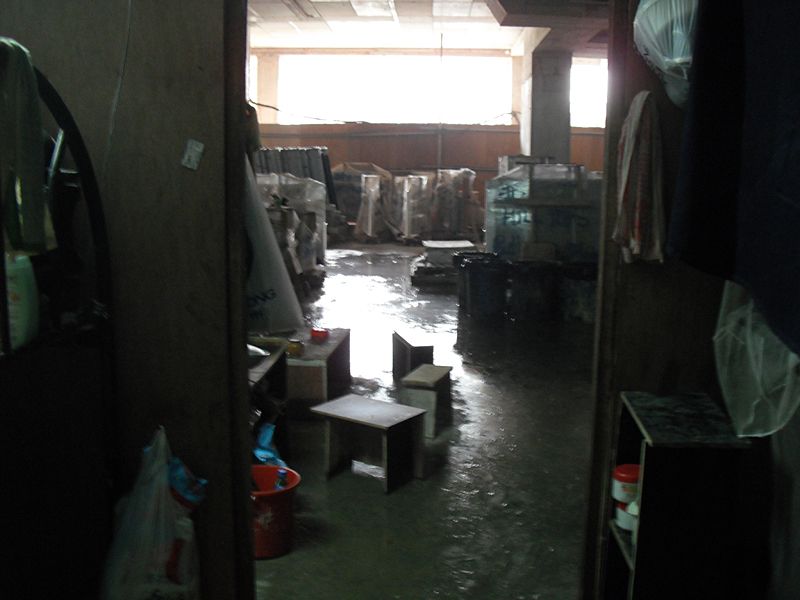
So here is what remains “恶劣” about this situation. The on-site basement that you see in the video is part of a development described as “luxury hilltop living with the privacy and seclusion of an exclusive resort”. The developer has boasted, on its website, of a net profit increase of 57% to $44.5 million for its 2008 financial year. Meanwhile, Liu’s employer, Tiong Seng Contractors, has won an award from the Building and Construction Authority for Construction Excellence. Its website lists a hosts of other awards and accreditations.
If these are profitable companies with business clout, why are they not even fulfilling a basic requirement of housing the workers building its prized projects decently? Workers who toil up to 12 hours a day, sometimes 7 days a week, to complete the projects that keep our economy humming.
——
Here are some more examples of the living conditions foreign workers endure:
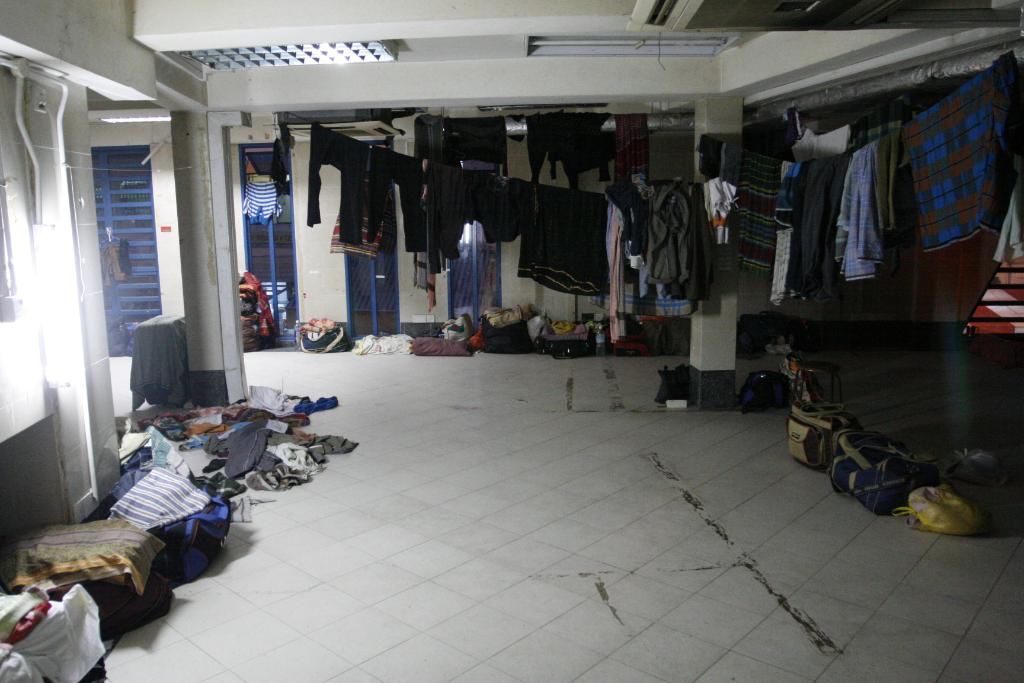
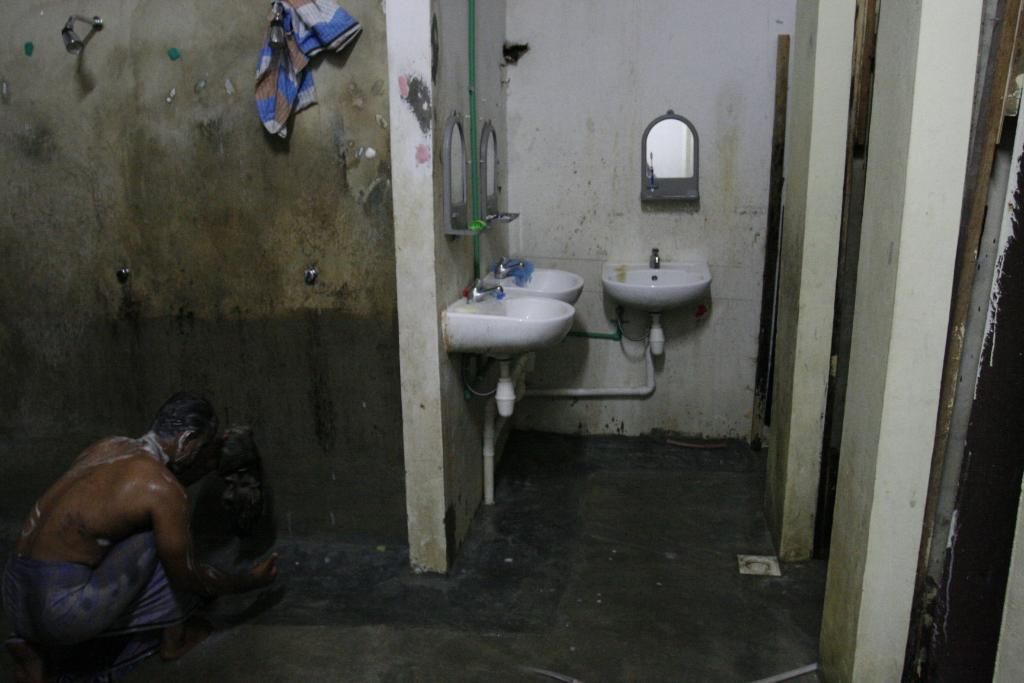

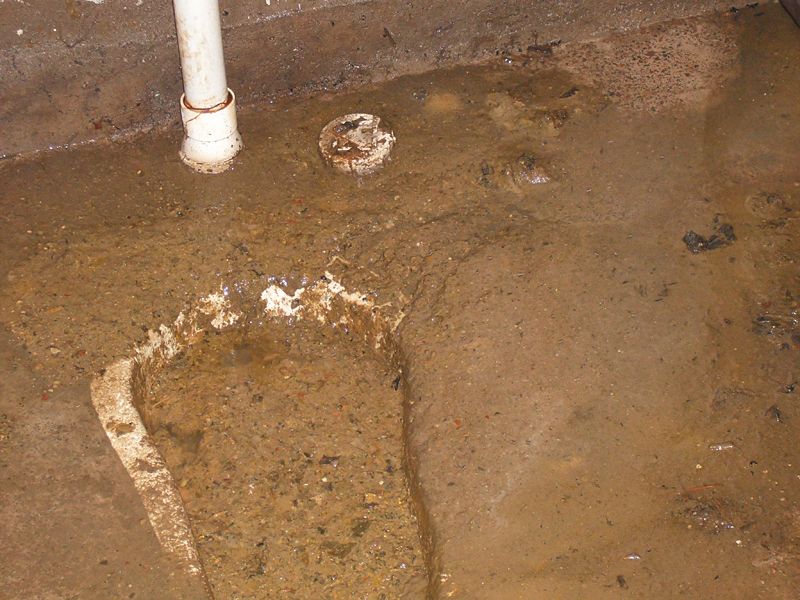
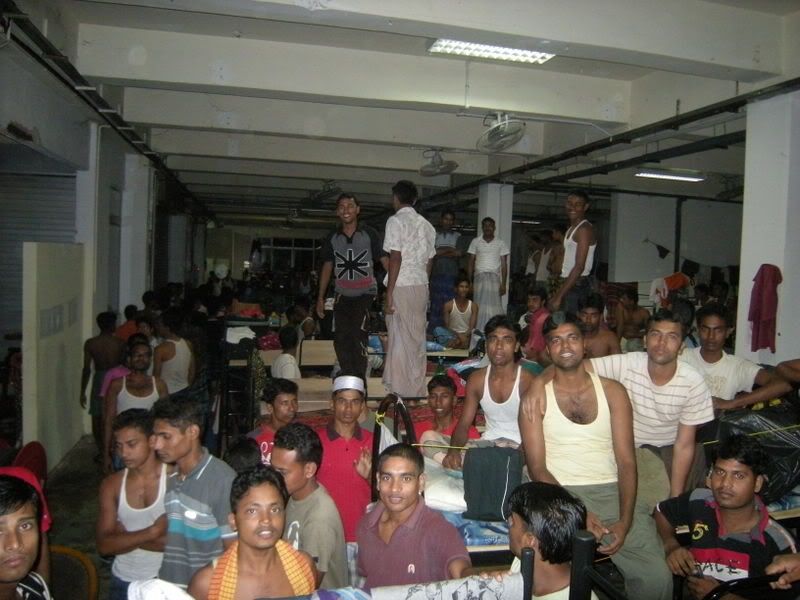
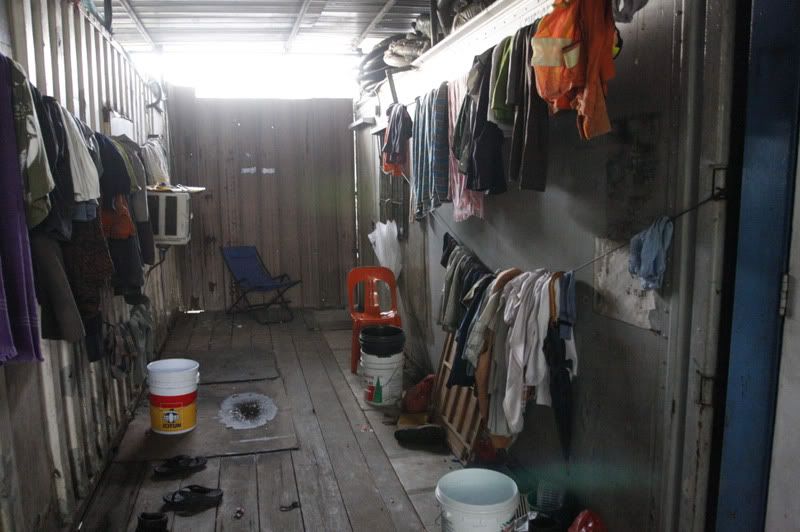









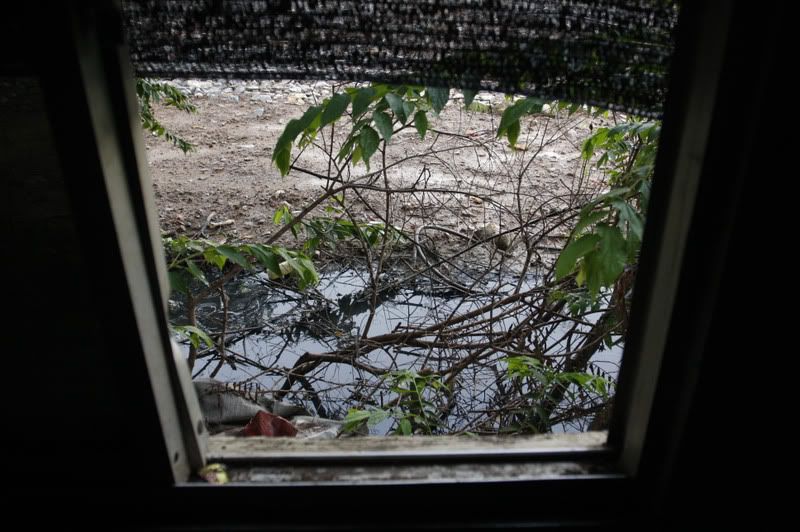

Current Affairs
Ng Eng Hen: Dust clouds likely caused armoured vehicle collision during Exercise Wallaby
Dust clouds limiting visibility likely contributed to the collision between two Hunter vehicles during Exercise Wallaby, Defence Minister Ng Eng Hen explained in his parliamentary reply. 12 servicemen sustained mild injuries, but safety measures prevented more serious outcomes. A formal investigation is ongoing to ensure further safety improvements.

SINGAPORE: Low visibility caused by dust clouds was identified as the likely cause of the collision between two Hunter armoured fighting vehicles (AFVs) during Exercise Wallaby last month, Defence Minister Ng Eng Hen said in a written parliamentary response on Tuesday (15 October).
The incident, which occurred in Queensland, Australia, on 24 September 2024, resulted in mild injuries to 12 servicemen.
Dr Ng’s statement was in response to a parliamentary question from Mr Dennis Tan, Workers’ Party Member of Parliament for Hougang SMC.
Mr Tan asked for details on the accident, specifically its cause and whether any lessons could be applied to enhance training and operational safety within the Singapore Armed Forces (SAF).
The collision took place during a night-time movement of Hunter AFVs at the Shoalwater Bay Training Area.
The vehicles were returning to base when one rear-ended another. Dr Ng explained that the dust clouds generated by the AFVs’ movement significantly impaired visibility, might likely contributing to the accident.
The 12 affected servicemen sustained mild injuries and were promptly taken to the nearest medical facility.
None of the injuries required hospitalisation, and all 12 servicemen were able to rejoin their units for training the next day.
According to the minister, adherence to safety protocols—such as wearing seat belts and protective gear—played a crucial role in limiting the injuries to mild ones.
Following the incident, a safety pause was immediately implemented, with all drivers being reminded to maintain proper safety distances, especially when visibility was compromised.
Troops were also reminded to adhere strictly to safety protocols, including the proper use of safety equipment, Dr Ng added.
The safety lessons from the incident were shared not only with the affected units but also with other participating groups in the exercise, as well as units back in Singapore, through dedicated safety briefings.
Mr Tan also asked about the broader implications of the incident. In his response, Dr Ng said that a formal investigation had been launched in accordance with SAF’s safety incident protocol.
The investigation aims to assess the circumstances more thoroughly and identify any further measures that could be taken to enhance safety.
Dr Ng shared that recommendations arising from the investigation will be implemented where necessary.
Exercise Wallaby is SAF’s largest unilateral overseas exercise, and the 2024 edition began on 8 September, running until 3 November.
The exercise involves approximately 6,200 personnel, including 500 operationally ready national servicemen.
The exercise has been conducted at Shoalwater Bay Training Area in Queensland since 1990, and it is a key part of SAF’s overseas training program.
The Hunter AFV, one of the vehicles involved in the collision, is a state-of-the-art platform jointly developed by the Defence Science and Technology Agency, the Singapore Army, and ST Engineering.
It replaced the SAF’s aging fleet of Ultra M113 AFVs in 2019, which had been in service since the 1970s. The Hunter is equipped with advanced features, including a 30mm cannon, a 76mm smoke grenade launcher, and an automatic target detection and
tracking system designed to enhance operational effectiveness. It is also capable of traveling at increased speeds and covering longer distances, making it a versatile asset for the SAF.
Current Affairs
Government to “carefully consider” Lee Hsien Yang’s demolition application for 38 Oxley Road
The Singapore Government will “carefully consider” Mr Lee Hsien Yang (LHY)’s application to demolish the house at 38 Oxley Road. LHY announced his intent on Tuesday morning following the recent death of his sister, Dr Lee Wei Ling, reaffirming his commitment to honour his parents’ wish for the house’s demolition.

The Singapore Government has indicated that it will “carefully consider” Mr Lee Hsien Yang’s (LHY) application to demolish the family home at 38 Oxley Road.
LHY, the youngest son of Singapore’s founding Prime Minister, the late Lee Kuan Yew (LKY), announced his intention to apply for the demolition in a Facebook post on 15 October 2024, following the death of his sister, Dr Lee Wei Ling, on 9 October.
The announcement marks a significant development in the ongoing saga over the fate of the historically significant property, which has been at the heart of a family dispute since LKY’s passing in 2015.
In his will, executed in December 2013, LKY expressed his desire for the house to be demolished “immediately after” Dr Lee moved out of the property. Dr Lee, a prominent neurologist, had been the last remaining resident of the house.
LHY reaffirmed his commitment to carrying out his father’s wishes, stating, “After my sister’s passing, I am the only living executor of my father’s estate. It is my duty to carry out his wishes to the fullest extent of the law.”
He added that he would seek to build a small private dwelling on the site, which would be “held within the family in perpetuity”.
LHY also referenced his brother, Senior Minister Lee Hsien Loong’s (LHL) remarks in Parliament in 2015, when he was Prime Minister, stating that upon Dr Lee’s passing, the decision to demolish the house would rest with the “Government of the day.”
In response to media queries regarding LHY’s announcement, a spokesperson for the Ministry of National Development (MND) acknowledged the intended application and emphasised that the Government would “carefully consider issues related to the property in due course”.
The spokesperson also highlighted that any decision would need to balance LKY’s wishes, public interest, and the historical value of the house.
The house at 38 Oxley Road, where key decisions about Singapore’s path to independence were made, has been a focal point of public and political discussion.
The future of the house became contentious in 2017 when LHY and Dr Lee publicly accused their elder brother, LHL, of trying to preserve the house against their father’s wishes for political reasons.
LHL denied the accusations, issuing a Ministerial Statement in Parliament, where he also raised concerns over the preparation of their father’s final will. He clarified that he had recused himself from all decisions regarding the property and affirmed that any government action would be impartial.
In 2018, a “secret” ministerial committee, which was formed in 2016 to study the future of 38 Oxley Road, proposed three options: preserving the property and designating it as a national monument, partially demolishing the house while retaining the historically significant basement dining room, or allowing complete demolition for redevelopment. LHL accepted the committee’s conclusions but stated that no immediate decision was necessary, as Dr Lee was still living in the house.
In a statement conveyed by LHY on behalf of Dr Lee after her passing, she reiterated her strong support for her father’s wish to demolish the house. “My father, Lee Kuan Yew, and my mother, Kwa Geok Choo, had an unwavering and deeply felt wish for their house at 38 Oxley Road to be demolished upon the last parent’s death,” the statement read.
She added, “He had also appealed directly to the people of Singapore. Please honour my father by honouring his wish for his home to be demolished.”
Despite selling the house to LHY at market value in 2015, LHL’s stance regarding the house’s preservation became a public issue, especially after the family disclosed that the Government had raised concerns about reinstating the demolition clause in the 2013 will. The ministerial committee had reviewed the matter, but a final decision was deferred until now.
The fate of 38 Oxley Road remains to be seen, but the Government’s decision will likely have lasting implications for the legacy of the Lee family and the conservation of Singapore’s historical landmarks.
-

 Comments7 days ago
Comments7 days agoLHL’s 15-minute visit to Dr Lee Wei Ling’s wake raises eyebrows among Singaporeans
-

 Singapore1 week ago
Singapore1 week agoMedia presence at Lee Wei Ling’s funeral contradicts family’s request for privacy
-

 Opinion7 days ago
Opinion7 days agoPolice say LHY and LSF free to return, but risk of arrest and passport seizure remains
-

 Singapore5 days ago
Singapore5 days agoPM Wong’s budget flight homecoming via Scoot makes headlines, but why?
-

 Current Affairs2 weeks ago
Current Affairs2 weeks agoTJC issued 3rd POFMA order under Minister K Shanmugam for alleged falsehoods
-

 Editorial3 days ago
Editorial3 days agoLim Boon Heng’s misleading claims & omission in July ST interview on Income-Allianz deal
-

 Singapore1 week ago
Singapore1 week agoDr Lee Wei Ling, daughter of Singapore’s founding prime minister, passes away at 69
-

 Civil Society1 week ago
Civil Society1 week agoSingaporean groups urge foreign minister to expedite recognition of Palestine












